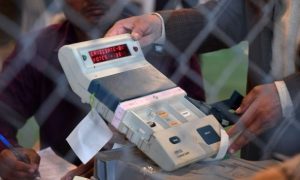India’s largest bank State Bank of India (SBI) has seen its gross non-performing assets (NPAs) under the Kisan Credit Card (KCC) doubling in just a matter of three years.
The onus for higher delinquencies partly goes to the trend of farm loan waivers that had started nearly four years ago. However, the general slowdown in the economy, rural distress and lower price realisation (inflation being low for most part of the years) have also been contributing to growing NPAs in the KCC segment.
According to available figures, the SBI’s gross NPAs have doubled to 16 per cent by September 2019 from 8 per cent in 2016-17. The size of gross NPAs is about Rs 17,000 crore-plus for the SBI.
The SBI being the largest bank with total assets of Rs 37 lakh crore, it alone contributes 15 per cent to the total outstanding of banks, cooperative banks and regional rural banks put together. If SBI’s gross NPAs are to be taken as yardstick, the industry’s NPAs under KCC would roughly come around at Rs 1 lakh crore-plus. Currently, the total outstanding loans under KCC is Rs 7.09 lakh crore for the industry. The KCC outstanding was about Rs 6.68 lakh crore in 2017-18.
The biggest share of KCC loans comes from Uttar Pradesh with outstanding card balance of Rs 1.09 lakh crore. Rajasthan is next with Rs 81,070 crore followed by Madya Pradesh (Rs 64,725 crore), Punjab (Rs 57,073 crore), Maharashtra (Rs 55,934 crore) and Gujarat (Rs 44,998 crore).
KCC, a two-decade old product, offers collateral free loans especially for meeting working capital needs of the farmers, who are allowed to use the funds for cultivation, post harvest expenses and consumption. The interest charged by banks is very nominal at 7 per cent per annum.
The KCC mirrors the NPA trend in the overall agri portfolio. The SBI’s agri NPAs have trebled over the last three years. In fact, the PSBs, especially Bank of India, IDBI Bank and others, have also seen NPAs of over 15 per cent-plus.
A recent RBI study has drawn a correlation between the loan waivers announced by states and the growing defaults in those states. The RBI has always discouraged the centre from announcing loan waivers as it creates a moral hazard. There is a tendency of people defaulting in anticipation of relief from the government. Before 2014, the loan waivers were few and far between. Almost three decades ago, the centre government came out with a nationwide farm loan waiver scheme. This scheme was followed by another waiver after 18 years under the Congress-led UPA government. This new trend of states announcing loan waiver is a dangerous one as state finances are already stretched.
The loan waivers are already constraining the resources of the states for public expenditure. While the government has taken some path-breaking insurance-led steps such as crop insurance and medical support, a lot needs to be done for creating the agri infrastructure. The investments during the post harvest phase have been completely neglected.
Along with states, the banks are becoming the big sufferers as it also impacts their balance sheets.





































